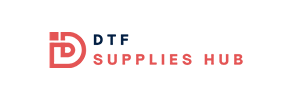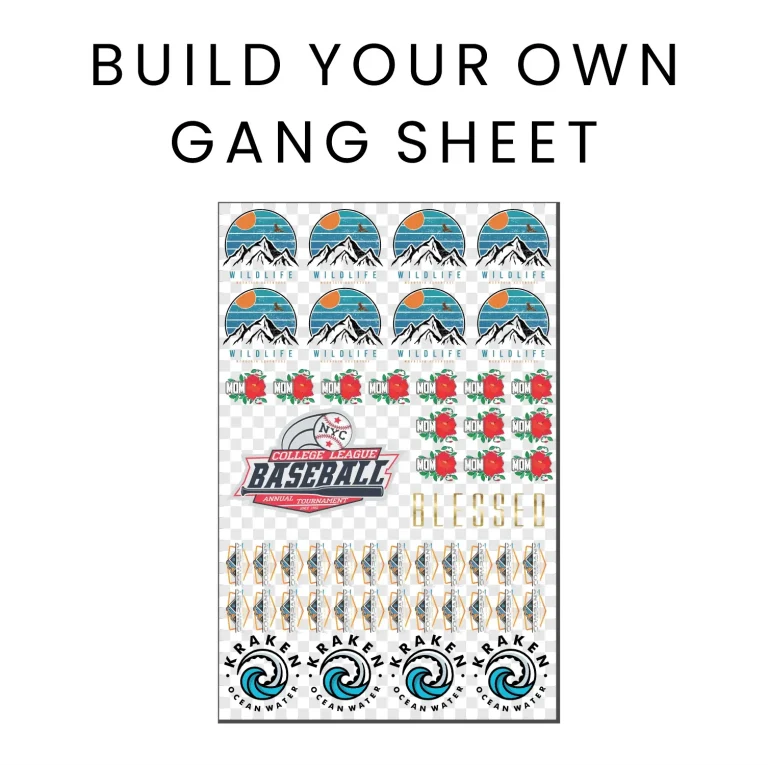DTF gangsheet builder is transforming garment customization by automatically arranging multiple designs on a single print sheet, turning a manually tedious process into a streamlined workflow that fits fast-paced production environments. By embracing DTF ganging automation and efficient DTF gangsheet creation, shops can move toward a repeatable process that minimizes waste and speeds up production, reducing setup time, minimizing mistakes, and leaving operators with more time for inspection. If you’re wondering how to automate DTF printing, this tool handles margins, bleed, and color channels so the files are ready for RIPs and printers, with validation steps built in. It supports DTF workflow optimization and DTF print batching, providing template management and batch processing to streamline production, improve resource utilization, and help predict lead times. This combination reduces waste, shortens cycles, and gives print shops the confidence to take on more complex campaigns while maintaining on-time delivery and consistent quality to meet evolving brand standards.
Viewed through a different lens, this technology serves as a layout automation engine for multi‑design runs, aligning artwork, color separations, and garment types into print-ready sheets. In industry talk, you’ll hear references to DTF sheet tiling software, ganging automation layers, or a batching workflow that smooths the handoff from design to production. LSI principles bring in related ideas like template-driven planning, color space management, and sequencing logic to optimize ink use and reduce setup. Together, these terms describe a cohesive system that accelerates the production line while maintaining accuracy and consistency across orders.
1) Understanding DTF ganging: how multiple designs on a single sheet drive efficiency
DTF ganging is the practice of placing several designs on one gang sheet to maximize print area, minimize waste, and shorten setup times. By arranging artwork in a grid while accounting for margins, bleed, color separations, and printer constraints, shops can extract more hits per sheet and reduce unit costs. The result is faster turnarounds and the ability to take on more orders without sacrificing quality, especially when deadlines loom. This approach turns complex planning into a repeatable strategy that scales with demand.
A well-executed gang sheet balances garment variety, print sizes, and color profiles to avoid misregistration and edge cropping. It requires careful consideration of safe zones and consistent margins across designs. The end goal is a predictable production flow where each batch uses the same rules, making it easier to train staff and optimize material utilization over time.
2) DTF ganging automation: from manual layouts to scalable, repeatable workflows
Automation in DTF ganging shifts design-to-print from manual layout tinkering to a repeatable, scalable workflow. By leveraging smart layout rules, standardized templates, and batch processing, shops can produce consistent gang sheets with minimal intervention. This is the core idea behind DTF ganging automation, which reduces drift between jobs and frees operators to focus on quality control and throughput.
Implementing automated workflows helps teams answer questions like how to automate DTF printing effectively. With automated tiling, color management, and export routines, the process becomes more reliable, faster to onboard new designs, and easier to forecast production capacity. The result is fewer human errors and more consistent results across large batches.
3) DTF gangsheet builder: a dedicated tool for intelligent layout and batch processing
The DTF gangsheet builder is the central tool that brings intelligent layout, templates, and batch processing into one streamlined system. It automates the arrangement of artwork, color channels, and print files, enabling users to generate multiple gang sheets from a single project. For shops, this means stable margins, uniform bleed, and export-ready files that align with the printer’s RIP—reducing manual dragging, dropping, and rework.
Beyond layout, the DTF gangsheet builder supports operators and business owners with repeatable processes that improve material utilization and production forecasting. By standardizing output formats and ensuring consistent file naming and metadata, teams gain visibility into production workflows and can scale confidently as demand grows.
4) DTF gangsheet creation: templates, color management, and accuracy across garments
DTF gangsheet creation goes beyond simply fitting designs on a sheet; it establishes a reliable pathway from design to print. Using predefined templates for different garment types and sizes ensures consistent margins and bleed across jobs, while color management alignment maintains fidelity from artwork to ink on fabric. This practice reduces surprises during production and supports smoother handoffs to RIPs and printers.
Accurate gangsheet creation hinges on controlling variables like color spaces, DPI, and transfer sizes. A robust approach includes establishing safe zones, standardized margins, and consistent naming conventions so that every print run uses correct profiles and media. Automation helps maintain these standards while designers focus on creativity, knowing the underlying layout rules remain constant.
5) How to automate DTF printing: practical steps to implement a gangsheet-driven workflow
If you’re wondering how to automate DTF printing, start by gathering all artwork and constraints, then normalize designs to a consistent color space and resolution. Defining templates for common garment types standardizes margins and bleed, enabling reliable auto layout that tiles designs efficiently across gang sheets. This structured approach reduces manual adjustments and accelerates ramp-up time for new orders.
After running auto layout, conduct a quick review to verify alignment marks, safe zones, and color fidelity before exporting print-ready files. Output should follow exact naming conventions and RIP-ready formats, then be archived for future reuse. Archiving and reusing proven layouts speeds up future jobs and improves consistency across batches, reinforcing a repeatable, scalable DTF workflow.
6) DTF workflow optimization and print batching: maximizing throughput and consistency
DTF workflow optimization centers on standardization—of layout, color management, and file export—to achieve predictable production times and better resource planning. When you scale to higher volumes or manage multiple clients, print batching becomes a practical strategy that groups orders by size, color requirements, and ink load. Batching improves printer efficiency and simplifies downstream steps like curing and heat pressing by providing a consistent sequence for each batch.
Automation also reduces risk by enforcing consistent margins, alignment marks, and file naming, which lowers waste and misprints. Regular quality checks—color profile verification, DPI validation, and export format consistency—complement the automation layer. Over time, these practices contribute to improved profitability as the DTF ganging automation framework matures, enabling reliable expansion from a single printer to a full batch production line.
Frequently Asked Questions
What is a DTF gangsheet builder and how does it enable DTF ganging automation?
A DTF gangsheet builder is a software tool that automatically lays out artwork, color separations, and print files on gang sheets for multiple garments. It enables DTF ganging automation by applying templates, margins, bleed, color profiles, and sequence rules, reducing manual arrangement time and human error. The result is faster setup, better material utilization, and more consistent, scalable production.
How does DTF gangsheet creation work with a dedicated gangsheet builder?
DTF gangsheet creation using a dedicated builder provides intelligent auto layout, template management, and batch processing. It standardizes margins, bleed, and color handling, exports printer-ready files, and ensures consistent naming and metadata for every run. This makes it easier to reproduce high-quality gang sheets across jobs.
How to automate DTF printing with a gangsheet builder?
Follow a practical workflow: gather artwork and constraints, normalize color space, define templates for common garment types, run auto layout to tile designs, review alignment and color fidelity, export RIP-ready files, and archive layouts for reuse. A gangsheet builder centers automation for reliable DTF printing.
What is DTF workflow optimization and how can a gangsheet builder help?
DTF workflow optimization means standardizing layout, color management, and file export to shorten lead times and improve resource planning. A gangsheet builder accelerates this by automating layout, applying templates, batching orders, and exporting consistent files, enabling predictable production and easier scaling.
What is DTF print batching and how does a gangsheet builder support it?
DTF print batching groups orders by size, color requirements, or ink load to maximize printer efficiency and minimize setup waste. A gangsheet builder supports batching by generating multiple, color-consistent gang sheets in one run, aligning workflow steps (tile, preview, export) and reducing handling time between jobs.
What features define effective DTF ganging automation for long-term success?
Key features include auto layout and tiling, template management, color management integration, batch processing and sequencing, and export options. A robust DTF gangsheet builder also offers metadata/version control, archive/reuse capabilities, and quality checks to sustain DTF ganging automation across growing volumes.
| Topic | Key Points |
|---|---|
| What is ganging in DTF | Placing multiple designs on one sheet; grid layout; account for margins, bleed, color separations, and printer constraints. A well-planned gang sheet minimizes misregistration, maximizes hits per sheet, lowers unit costs, and shortens lead times. |
| DTF gangsheet builder (core tool) | Automates ganging with intelligent layout, templates, and batch processing. Enables multiple gang sheets from a single project and exports print-ready files in required formats; improves consistency and throughput. |
| Daily features | Auto layout/tiling; template management; color management integration; batch processing and sequencing; export options with print-ready files and standardized naming. |
| From gangsheet creation to production | Supports consistent naming, metadata, and version control; reduces human error; ensures correct color profiles, media, and transfer size for production. |
| Automating DTF printing workflow | Gather artwork and constraints; normalize artwork; define templates; run auto layout; review and tweak; export print-ready files; archive and reuse layouts. |
| DTF workflow optimization and batching | Standardizes layout and color management; enables predictable production times; groups orders by size/color/ink load; simplifies post-print steps. |
| Quality control and error reduction | Automation reduces human error; enforces margins, bleeds, and registration marks; standardizes file naming; validate color profiles and DPI settings. |
| Best practices | Standardize design sizes and margins; use consistent color profiles; create templates for common garments; maintain clear naming conventions and metadata; monitor output quality. |
| Common challenges and solutions | Color bleed, edge cropping, misregistration; verify artwork preparation, printer/RIP settings, and alignment marks; perform smaller test runs before full batches. |
| Practical scenario | A small shop uses templates and auto tiling to speed batch creation, reducing setup time and increasing throughput while maintaining quality. |
Summary
HTML table provided above explains key points of the base content in English. Now a descriptive conclusion follows, optimized for SEO with the term DTF gangsheet builder in the first sentence.


